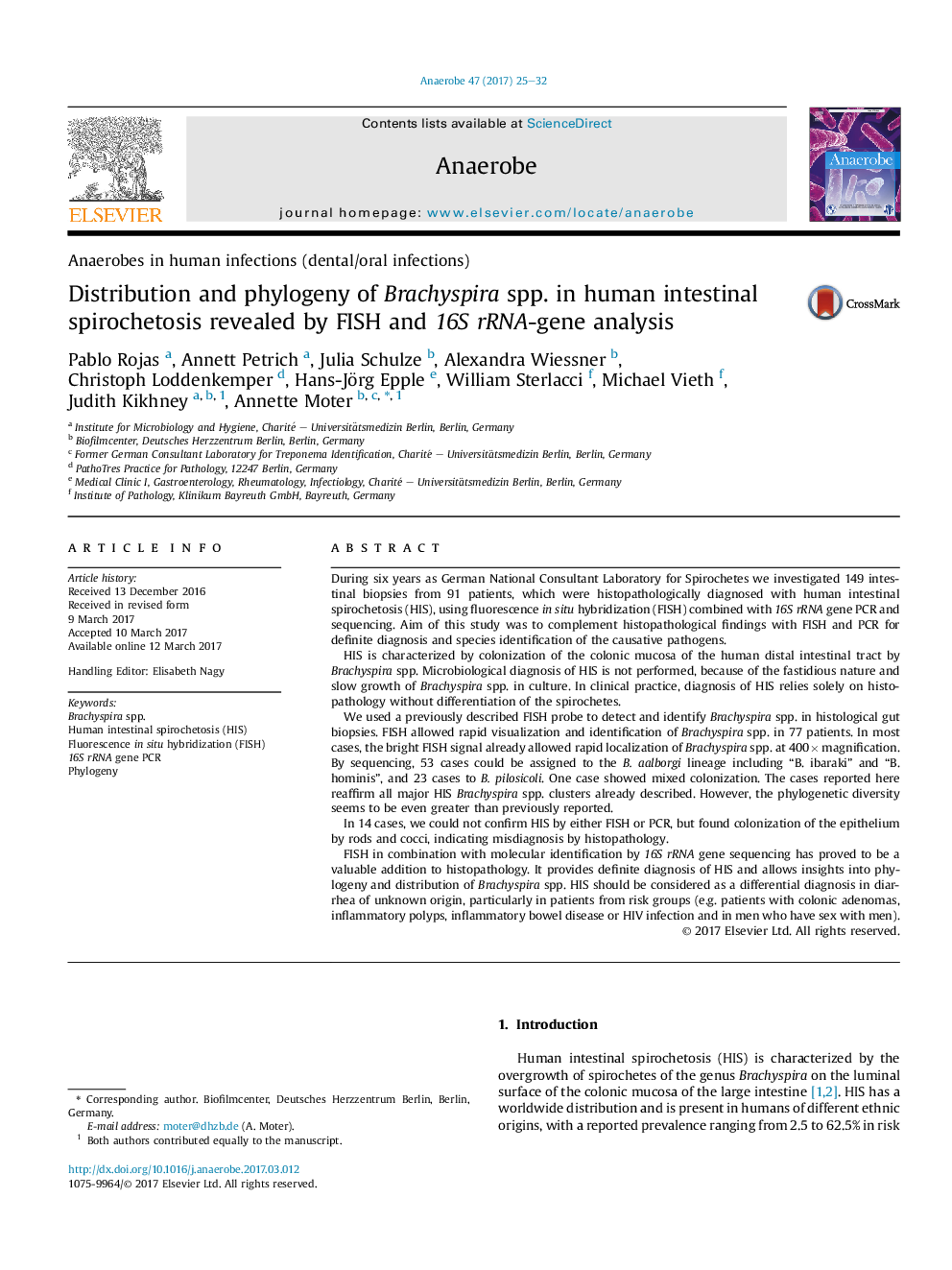| کد مقاله | کد نشریه | سال انتشار | مقاله انگلیسی | نسخه تمام متن |
|---|---|---|---|---|
| 5671304 | 1592817 | 2017 | 8 صفحه PDF | دانلود رایگان |

- The as yet largest cohort of 77cases with human intestinal spirochetosis was analyzed.
- Intestinal colonization with Brachyspira spp. was diagnosed using FISH.
- Brachyspira species were identified using 16S rRNA-gene PCR and Sequencing.
- 53 cases belonged to the B. aalborgi lineage and 23 cases to B. pilosicoli.
- FISH combined with 16S rRNA PCR/sequencing provided definite diagnosis.
During six years as German National Consultant Laboratory for Spirochetes we investigated 149 intestinal biopsies from 91 patients, which were histopathologically diagnosed with human intestinal spirochetosis (HIS), using fluorescence in situ hybridization (FISH) combined with 16S rRNA gene PCR and sequencing. Aim of this study was to complement histopathological findings with FISH and PCR for definite diagnosis and species identification of the causative pathogens.HIS is characterized by colonization of the colonic mucosa of the human distal intestinal tract by Brachyspira spp. Microbiological diagnosis of HIS is not performed, because of the fastidious nature and slow growth of Brachyspira spp. in culture. In clinical practice, diagnosis of HIS relies solely on histopathology without differentiation of the spirochetes.We used a previously described FISH probe to detect and identify Brachyspira spp. in histological gut biopsies. FISH allowed rapid visualization and identification of Brachyspira spp. in 77 patients. In most cases, the bright FISH signal already allowed rapid localization of Brachyspira spp. at 400à magnification. By sequencing, 53 cases could be assigned to the B. aalborgi lineage including “B. ibaraki” and “B. hominis”, and 23 cases to B. pilosicoli. One case showed mixed colonization. The cases reported here reaffirm all major HIS Brachyspira spp. clusters already described. However, the phylogenetic diversity seems to be even greater than previously reported.In 14 cases, we could not confirm HIS by either FISH or PCR, but found colonization of the epithelium by rods and cocci, indicating misdiagnosis by histopathology.FISH in combination with molecular identification by 16S rRNA gene sequencing has proved to be a valuable addition to histopathology. It provides definite diagnosis of HIS and allows insights into phylogeny and distribution of Brachyspira spp. HIS should be considered as a differential diagnosis in diarrhea of unknown origin, particularly in patients from risk groups (e.g. patients with colonic adenomas, inflammatory polyps, inflammatory bowel disease or HIV infection and in men who have sex with men).
Journal: Anaerobe - Volume 47, October 2017, Pages 25-32